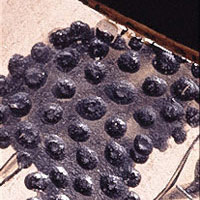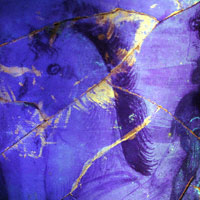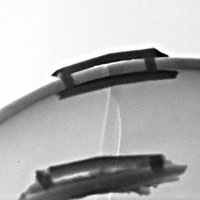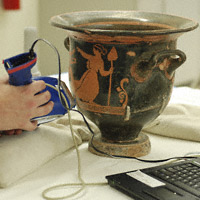|
Examination Methods Conservators and scientists use a wide array of non-destructive techniques to analyze ancient vases for information about their manufacture, condition, and past attempts at repair and restoration. |
||
|
Low-Power Microscopy Here, low-power microscopy clearly shows the added-clay grapes behind the figure of Dionysos on the Restored Wine Cup with Dionysos and a Satyr, on view in the exhibition. |
|
|
Ultraviolet (UV) Visible Fluorescence The orange fluorescence of shellac, an adhesive commonly used in 19th-century restorations, can be seen in this UV detail of the Restored Oil Jar with a Deceased Youth Seated at a Tomb, on view in the exhibition. |
|
|
X-radiography This X-ray shows ancient double-sided staples mending a fractured area on a Repaired Mixing Vessel with a Satyr and Maenad, on view in the exhibition. |
|
|
X-ray Fluorescence (XRF) Spectroscopy Here, the ancient staples on the Repaired Mixing Vessel with a Satyr and Maenad are identified as lead using a portable XRF unit. |
|



